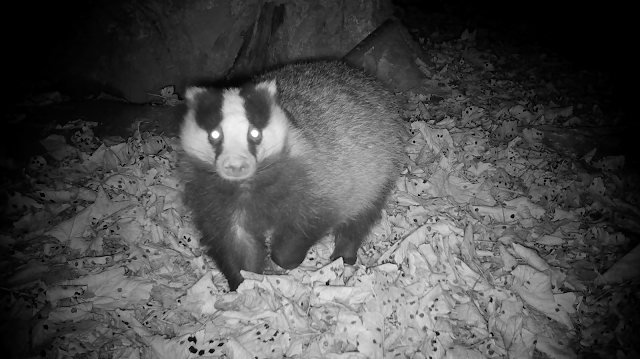For the past few weeks it has been hard to keep track of the otters. After all the rain in October the water level in the culvert was very high and either the otters weren't using it or the camera wasn't picking them up. Now I have found another place where they pass through fairly frequently and I have been getting good images.
Last week the water level had fallen and mother & pup were again recorded in the culvert. The pup seemed a bit wary or distracted by something on the path above, perhaps a badger as there is a sett close by. The pup was spooked, startling the mother otter. There was a brief break in recording (the camera records 20s at a time) but they did swim through. The camera position is higher than ideal after the recent deep water (I like to get as close as possible to eye level).
On the same night the two otters were also recorded by two cameras at the water's edge. The videos are intriguing. Mother and pup emerged from the water at 03.09.14 and went up the bank, pausing to sniff both cameras. They reappeared from the water at 03.10.04, so 50 seconds later, and went up the same way. I can be sure of the timings because they were the same on both cameras. The otters must have dashed round back into the water out of view to reappear so quickly. The mother is ahead each time and triggers the camera so she is less well seen. The pup, however, shows the same mark or pattern on its forehead each time so we can be sure it is the same animal. This is the first time round.
And the second.
Just before dawn they were picked up again going back the other way. You can see the light as the second camera is triggered. The weird white thing that dangles down is a blade of dried grass blown in the wind.
On the previous night there was another intriguing observation. Mother and pup returned to the water and swam off to the right. Ninety seconds later a solo otter came down the same way and swam off to the left. Probably a dog otter keeping an eye on things.
It is much more fun seeing the otters out of the water. Now that I have found another promising spot I'll monitor it more closely to see which ones are coming and going.



































